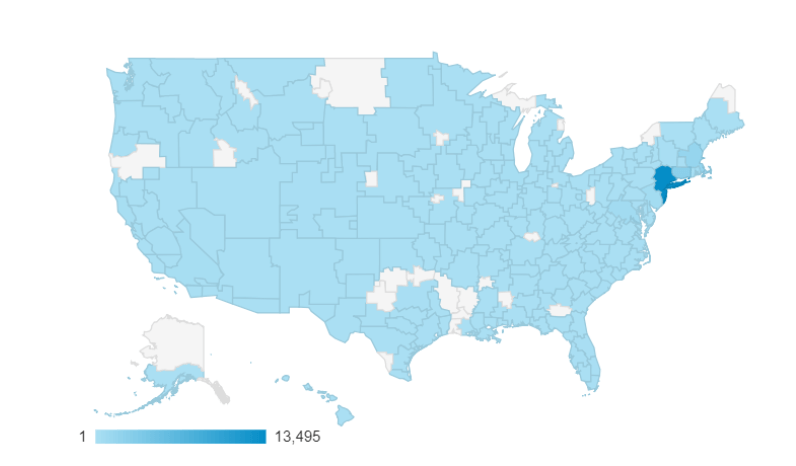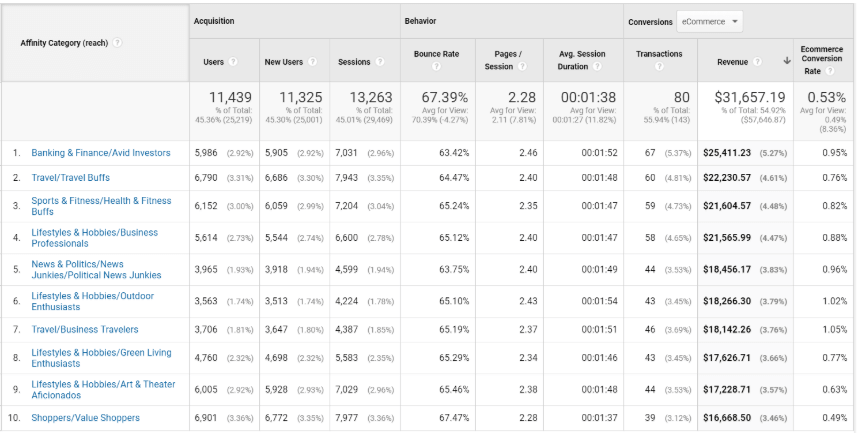 Welcome to Q4Launch!
Welcome to Q4Launch!
And welcome to what has been, for those of us already here, something we all sometimes struggle to do consistently well: creating and executing effective marketing strategies on behalf of our customers.
Why Our CEM Job Matters at Q4Launch
Customers go into business with Q4Launch so that our team can effectively achieve the goals set-out for them by the customer.
With very few exceptions, our customers want to see an ROI (return on investment). While there are other metrics of success we can’t easily measure, phone calls that lead to bookings being a major one, the two we can and do are:
- Leads generated
- Online bookings generated
It is your job to ensure the ecosystem of services Q4Launch provides to your customer are working together to achieve the above goals consistently and at a high rate.
We’ve Been Lucky with Getting Ranked Before, Why This Guide?
Keep in mind that our customers don’t come to us to “get their keywords ranked”. They work with us because they want help managing their revenue. More eyeballs reading blogs will be fantastic news to share, but it’s not the end goal. More of those eyeballs converting to bookings is.
If everyone is following this technique, we’ll be able to do experiments where we can do everything the same except for one variable and actually be able to see in the future if that one change to our process was effective or not.
Besides, if we successfully create a standard system where our content results in lots of traffic converting to bookings and leads, we’d corner the market as a hospitality marketing company.
If there are no more questions from the peanut gallery, let’s get started.
 The Most Important Part of This is Strategy!
The Most Important Part of This is Strategy!
Keep in mind that no company has ever gone out of business for not getting enough traffic to their website.
What are your goals for the period you’re planning?
Good question, and one to ask your marketing customer. It makes for an easier time creating a hospitality marketing plan for a particular quarter or year.
Set Your Business Goals
It’s much easier to start with well-established goals that you can measure and adjust your strategy according to how successful we are in meeting.
A business goal needs to be something measurable, and something with a defined deadline.
For example, which sounds more manageable and therefore achievable?
- Increase bookings in Q2 of 2018
- Increase bookings of our honeymoon package and honeymoon suites in Q2 of 2018
After establishing your goal, you can work backwards:
- Big goals for each quarter of the coming year
- Smaller goals for each month that support big quarterly goals
- Smaller goals for individual campaigns (blog, social media, email campaigns, etc) that support monthly and quarterly goals
Understand Your Target Guest
Before you pass notes off to the SEO team to pull-together consumer research, be sure to include in your guide to the customer such information as:
- Customer demographics (the more detailed, the better)
- Amenities on site
- Main draws for guests to a location
- Main draws for guests to your specific customer versus their competition
The goal with providing these notes is to ensure that we’re putting our customers’ best foot forward and attracting their ideal customer.
That is, the guest who loves what our customer offers and is willing to pay a premium for it.
Prepare Yourself to Measure Effectiveness of Your Marketing Campaigns
Keep in mind that you need to measure effectiveness. So think of how you’ll be tracking effectiveness of your efforts within Google Analytics.
To start with, make sure that all tracking within Analytics is working correctly:
- eCommerce
- Any lead generation campaigns (ex: last minute deals, vacation guides, request a quote, etc)
Do this now before you get any more data. If this process is working properly, you’ll be able to review what we’re doing for a customer and find ways to tweak and adjust to optimize what’s working well, or even cut out what’s not.
Alright, Now Plan How You’re Going to Get More Target Guests Staying with Your Customer
Let’s use an example for this.
Stanton House Inn is located in Greenwich, Connecticut. They’re about an hour’s drive or train ride from New York City. As such, a majority of their guests come from the NYC metro area.
 According to Google Analytics, about 50% of tracked online bookings come from website visitors from the age range of 25-44.
According to Google Analytics, about 50% of tracked online bookings come from website visitors from the age range of 25-44.
While 60% of visitors to the website are female, about 60% of online bookings are made by men:
 And here are top interests of guests that book online, based on Google Analytics tracking data:
And here are top interests of guests that book online, based on Google Analytics tracking data:
Stanton House Inn attracts a lot of business travelers.
So for this customer, let’s say midweek bookings are not a problem. But they’d like more leisure travelers in NYC to pick them for their new weekend getaway.
First, Understand What the Guest will be Expecting When They Visit
For Stanton House Inn, we’re going to target romantic travelers. And we’ll need to do a little research to understand what people expect to find at a business that serves romantic travelers.
You can start with a keyword like, “romantic connecticut bed and breakfast”, and look at relevant searches for the term to make some educated guesses on amenities. If your property is in the Poconos, for example, guests will be looking for champagne jacuzzi tubs (go look it up).
But in Connecticut, guests will be expecting amenities such as:
- Spas
- Fireplaces
- Jacuzzi or whirlpool tubs
- Great, Instagram-worthy breakfasts
Sometimes, a property is lucky enough to already have all these things. If they don’t, they can either elect to:
- Work on adding more of them
- Work with what they have, and accept that these amenities they’re lacking my hinder effectiveness in terms of conversions and bookings
- Go after a different demographic that wants different amenities that they already have
In our example, we’re good to move on to the next step.
Now, Research What Will Bring Your Target Guest to the Area
Quite frankly, this is something that customers should know beforehand. Opening a capital-intensive business like a hotel or bed and breakfast (you gotta rent or own a property to do it) requires understanding how you’re going to make your money back.
So a B&B in the middle of nowhere may not be the best idea ever without a clear strategy to make your business a destination for people.
But I digress.
Now that I’m off my soapbox, many of our customers don’t have this important information. And vacation rental management companies usually take advantage of other people’s planning and research and manage their homes for vacationers. So you need to help them with that research.
Go through their memory, or do more research (either keyword research or straight-up Google searches) to find things that draw guests to the area.
For Stanton House Inn, leisure travelers come for easily accessible and easy to plan:
- Winter getaways that don’t involve skiing
- Fall foliage
- Beach vacations (or guests just looking for a pool to lounge by)
- Local events, like: the Greenwich Film Festival, Greenwich Wine + Food, Greenwich Town Party
As luck would have it, you have 3 things to promote in each of the major tourist seasons, plus events to push throughout the year.
So… Now what?
Things to Keep in Mind When Planning a Content Marketing Campaign
Now you know when you want to be getting guests staying at Stanton House Inn:
- October for fall foliage
- December through March for winter getaways
- June through mid-September or so for beach and pool vacations
- Romantic getaways (honeymoons, anniversaries, “just because”) throughout the year
But slapping together a marketing campaign in October for fall foliage isn’t going to be effective.
Here’s why:
- Google and the search engines can take 30-90 days to even find a new page on your site, and will need time to A/B test their results and shift your page around in rankings according to how search engine users respond to your results
- Guests are often planning their vacations up to 3 months before they actually arrive. In the case of October bookings at Stanton House Inn, people are booking in August.
Property owners would obviously rather have their house booked-up well in advance of dates, to help with planning staffing and whatnot.
So to get Stanton House Inn booked by October (for example), you need:
- Your strategy planned by June, including packages, blogs, social media and email marketing campaigns and how they work together
- All new content published on the site by August, at the latest
- provided it’s perfect, with no need to make changes based on behavior like bounce rate, time on site, etc. That’s rare, so the earlier to allow for some wriggle room, the better.
- Start getting the idea of staying in October in potential guests’ heads well in advance using email marketing and social media campaigns. July or August would be good times to start.
- Sop-up last-minute bookers by regularly pushing promotions via email marketing and social media pushes into October. If you have a PPC campaign setup for the customer, use this tool to also gather-up people looking for last-minute getaways (since PPC is typically centered around keywords people use when they’ve got their credit card out, ready to book)
Sound like a lot of work? Is it. But on the plus side, once you get this up and running, the legwork will be there and mostly setup for next year’s push.
How so?
While social media and email marketing require regular inputs to be effective, an effective SEO-based campaign can be relatively speaking a set it and forget it setup.
In this case, regardless of when people are searching for a fall foliage getaway (like March, if they’re planners), your content will be there, ready for them to get them to book at Stanton House Inn. And if the house books-up by August, then you don’t need to use other marketing channels to fill the gaps of occupancy.
You can use those channels to push a different time or get a different target demographic to book.
It’s All About the Keyword Research
 The first step when creating a marketing strategy for one of Q4Launch’s customer (which will be mentioned interchangeably with “us”, as we’re working alongside the customer, rather than for them) is finding keywords for content.
The first step when creating a marketing strategy for one of Q4Launch’s customer (which will be mentioned interchangeably with “us”, as we’re working alongside the customer, rather than for them) is finding keywords for content.
Without a good keyword, you’ve got nothing.
Before working at Q4Launch, I wrote a blog about roads to explore in Greenwich.
There were no keywords, just content.
And, as I discovered, to my chagrin, no traffic.
After learning more about keyword strategy with Q4Launch, I went back and edited the blog to focus on the keyword: “Greenwich mansions”. After making a few edits to focus on that keyword, this same blog is now ranked #1 for that keyword. It has also consistently converted 0.81% of traffic that land on it into a lead (via Vacation Guide), for a total of 84 leads as of June 17, 2018.
Before there was no easy way for people to stumble on the blog: Google couldn’t quite figure-out what it was about, so it only offered the page-up to searchers if their text perfectly matched terms written haphazardly in my blog. After making those edits (and a lot of patience), that blog is now the #1-ranking article for keywords related mansions in Greenwich.
Go do a Google search, I’ll wait.
Throw a horde of monkeys into a room with a bunch of typewriters, and eventually one of them will write Shakespeare. But that would take a long time and be very, very messy. And there’s no guarantee that someone will do a Google search for that Shakespearean sonnet the monkey wrote.
Keyword research is our version of consumer research.
Doing keyword research validates for us that a topic is worth writing about because people are already demonstrating their interest by searching for it in the first place.
Now that you’re hooked on the magic of keywords, where to begin?
Keyword Research is so intense that it requires its own in-depth guide. But the SEO team largely handles this at Q4Launch.
Trust, But Verify
Before you incorporate a keyword into your strategy, though, make sure you do a quick Google search for the keyword your blog will pursue. You can presume that the top 2 to 3 results are the most likely clicked by Google searchers, and therefore the most relevant to what people searching for that keyword are looking for. If list posts seem to be the top pages in searches, for example, make sure your headline is a list as well (and has more in the list than those other results, for example).
Doing a search also helps you decide on what type of post to write: question, how-to, list, et cetera. It will also help save you from pursuing a keyword that doesn’t actually make sense vis-a-vis our customer. Recent examples include: “vineyard clothes” (seemingly perfect for a vacation rental company in Martha’s Vineyard, except this term shows results for Vineyard Vines, a clothing company), “Christmas in Connecticut” (seemingly perfect for a blog about celebrating Christmas at an inn in Connecticut, except this search is heavy with results related to a movie from the ‘40s that’s apparently still popular for some reason).
For more information, check-out this video from Rand Fishkin, formerly of Moz, explaining why Google AdWords’ keyword volume numbers are wildly unreliable.
Choose Your Content Marketing Topics Wisely
You’ll receive a list of potential keywords to use from the SEO team, but do not simply add them wherever they seem to work.
Don’t forget that we need to produce content for our target audience.
Why would you be looking through Google Analytics for audience information if not to know who to be targeting with your content?
SEO provides data on topics people show interest in with regards to a location or topic that may be relevant to your customer. That doesn’t mean they’re all perfect to use.
Things to consider when reviewing individual keywords or topic concepts to include in your marketing strategy:
- Would someone searching for this topic likely book a stay at your customer’s property?
- Can we provide content that doesn’t just answer a question, but provides a solution to the reader?
- Would the solution or answer we provide the reader achieve the goal we’ve outlined with our customer (ie: booking a stay, a package, convert to a qualified lead)?
For example:
We wrote a blog for a customer in Hendersonville, North Carolina, about bakeries in Hendersonville, NC. While this article resulted in a fair amount of traffic in terms of organic landings on the article, it rarely resulted in a next step from readers, and no bookings or leads.
But step back and consider: someone wanting to find bakeries in a town is likely not someone researching a trip. More likely, they’re someone already in Hendersonville looking for somewhere to buy a local pastry or coffee.
Instead, better understand who you’re targeting and create content that helps them solve a problem that our customer loves to get paid to solve.
In the case of a topic like weekend getaways from Charlotte, your writer knows who they’re targeting: people living in Charlotte. And based-off the topic, the problem you can help them solve is planning a weekend getaway from where they’re living.
How will you know if your topic choice and subsequent implementation is successful? When visitors who land on this content result in whatever you set as your goal for it:
- Leads generated
- Online bookings generated
- Packages purchased online
Just make sure you’re specific with your goals, so you can pivot and improve upon success or adjust if you and your team initially fail.
Put that Keyword in the Perfect Time Slot
 It takes about 30-90 days for Googlebot (and all the other search engine crawlers) to find a new page, catalogue it, and start offering it up in search results when someone searches a given keyword. We need to post our blog in the Goldilocks period: recently published makes it more relevant than all the other older information, but it can’t be so new that Google doesn’t find the blog and know what it’s about before people are searching for it.
It takes about 30-90 days for Googlebot (and all the other search engine crawlers) to find a new page, catalogue it, and start offering it up in search results when someone searches a given keyword. We need to post our blog in the Goldilocks period: recently published makes it more relevant than all the other older information, but it can’t be so new that Google doesn’t find the blog and know what it’s about before people are searching for it.
To achieve this Goldilocks period, try to schedule a blog about a keyword into your Marketing Strategy Calendar with a gap of a minimum of two months, in advance of the month in which Google’s Keyword Planner says the search traffic for that term will be high. Earlier is much better than later.
For email marketing in the Marketing Strategy Calendar, try to leave a month gap between when a blog is published and when it will be included in an email campaign. That should push the high traffic visit closer to when people would be searching and therefore when people are actually interested.
Q4Launch Marketing Services & How to Use Them in Marketing Strategy
Regardless of how beautiful our websites, well-written our content, or impressive our social media following, our customers pay us for one thing: results. And the results they’re always looking to see are monetary improvements.
At our company, that means more:
- Phone calls
- Leads generated
- Online bookings
As their contact, you need to always be reviewing the various services we render to our customers to ensure they’re providing the return on investment they need to see. If the customer doesn’t trust you’re doing that for them, they’ll start reviewing everything with a fine-toothed comb for you.
Website Design & Development
Design aids navigation and comprehension, so great design of your website is anything that contributes to great user experience.
The expectation for our websites is that they remove friction and frustration for potential guests in the booking process. A well-designed website should, from a long list:
- Provide all information necessary in an easily accessible manner to potential guests to make a comfortable decision to stay with our customers
- Provide an easy booking experience, regardless of platform (mobile, desktop, or tablet)
- Be easy and intuitive to use for any person, regardless of age, vision, or reading ability
If your website (including your booking engine) is running effectively, everything else on this list will work even better.
SEO
The work of the SEO team is to ensure that our websites both:
- Attract more visitors from organic search engines
- That an increasing number of those visitors convert to leads and bookings
Blogging
Blogging as a service works to:
- Attract more visitors from other traffic sources like organic searches, social media, and email marketing to blog content
- Ensure that an increasing number of those visitors convert to leads and bookings after reading and interacting with that content
Social Media
Social media as a service works to:
- Attract more traffic from social media platforms (Facebook, Instagram, and Pinterest for some customers)
- Ensure that an increasing number of those visitors convert to leads and bookings
PPC
PPC as a service works to:
- Attract more paid traffic from search engines
- Ensure that an increasing number of those visitors convert to leads and bookings
Email Marketing
Email marketing as a service works to:
- Attract more traffic from campaign lists
- Ensure that an increasing number of those visitors convert to bookings or phone calls that lead to bookings
How to Review Marketing Services’ Effectiveness
This requires a more in-depth guide than this already long article, which you can read here.
Stick a Fork in Me, I’m Done
This is by no means an exhaustive how-to guide, so feel free to keep adding to it so that we all get better at this.
After reading this guide you should have no more questions, and will be resented by me if you do.
Kidding, the hope is that this will generate more questions that create a deeper understanding and may lead to additions to this guide. Lord knows it could be EVEN LONGER.
Congratulations, you finished! Have fun creating Marketing Strategies like a boss!

